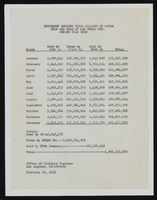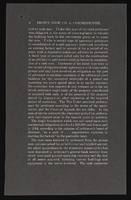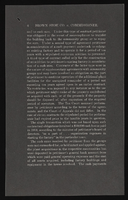Search the Special Collections and Archives Portal
Search Results
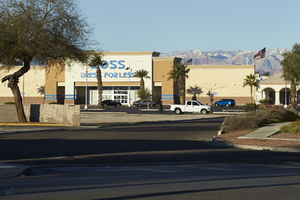
Exterior view of Ross Dress for Less business on Civic Center Drive, looking west in North Las Vegas, Nevada: digital photograph
Date
2019-02-06
Archival Collection
Description
From the UNLV University Libraries Photographs of the Development of the Las Vegas Valley, Nevada (PH-00394). Part of the collection documents the entire 19 mile length of the north/south Eastern Avenue / Civic Center Drive alignment. This photograph was captured in the section of Civic Center Drive between Las Vegas Boulevard and Lake Mead Boulevard.
Image
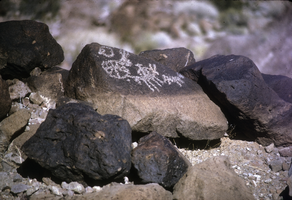
Slide of Petroglyphs on a rock, Boulder City, Nevada, circa 2000s
Date
unspecified year in 200X (year approximate)
Archival Collection
Description
Petroglyphs in the Boulder City Dry Fall Area. The exact location is unknown, but the location is possibly in Keyhole Canyon. Petroglyphs are pictogram and logogram images created by removing part of a rock surface by incising, picking, carving, or abrading. Outside North America, scholars often use terms such as "carving", "engraving", or other descriptions of the technique to refer to such images. Petroglyphs are found world-wide, and are often associated with prehistoric peoples. The word comes from the Greek words petro-, theme of the word "petra" meaning "stone", and glyphein meaning "to carve", and was originally coined in French as pétroglyphe. The term petroglyph should not be confused with petrograph, which is an image drawn or painted on a rock face. Both types of image belong to the wider and more general category of rock art or parietal art. Petroforms, or patterns and shapes made by many large rocks and boulders over the ground, are also quite different. Inukshuks are also uni
Image
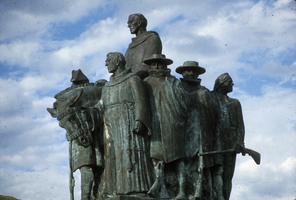
Slide of the This Is The Place Monument, Salt Lake City, Utah, circa 1990s
Date
1990 to 1999
Archival Collection
Description
A statue of early trappers that is inscribed with "This is the place." A view of the left-hand side of the This is the Place Monument. Several individual sculptures make up the full monument. The This is the Place Monument is a historical monument at the This is the Place Heritage Park, located on the east side of Salt Lake City, Utah, at the mouth of Emigration Canyon. It is named in honor of Brigham Young's famous statement in 1847 that the Latter-day Saint pioneers should settle in the Salt Lake Valley. Sculpted between 1939 and 1947 by Mahonri M. Young, a grandson of Brigham Young, it stands as a monument to the Mormon pioneers as well as the explorers and settlers of the American West. It was dedicated by LDS Church President George Albert Smith on 24 July 1947, the hundredth anniversary of the pioneers entering the Salt Lake Valley. It replaced a much smaller monument located nearby.
Image
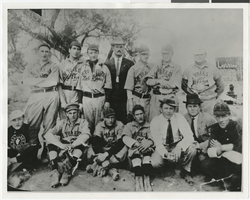
Photograph of New York Store Baseball team, circa 1907
Date
1906 to 1908
Archival Collection
Description
A group photo of a baseball team, possibly in Las Vegas, Nevada. Description provided with image: "Top Row: 1) Walter Houck; 2) Ben Emerick; 3) Frank Black; 4) Harry Beale; 5) H. Floyd Alter; 6) Curley Fennel; 7) Walter "Tubby" Sears. Bottom Row: 1) Mac McCormack; 2) Oswald; 3) Sullen; 4) Cockey Vores; 5) John Kramer; 6) Harley Harmon; 7) Shores."
Image
Pagination
Refine my results
Content Type
Creator or Contributor
Subject
Archival Collection
Digital Project
Resource Type
Year
Material Type
Place
Language
Records Classification

